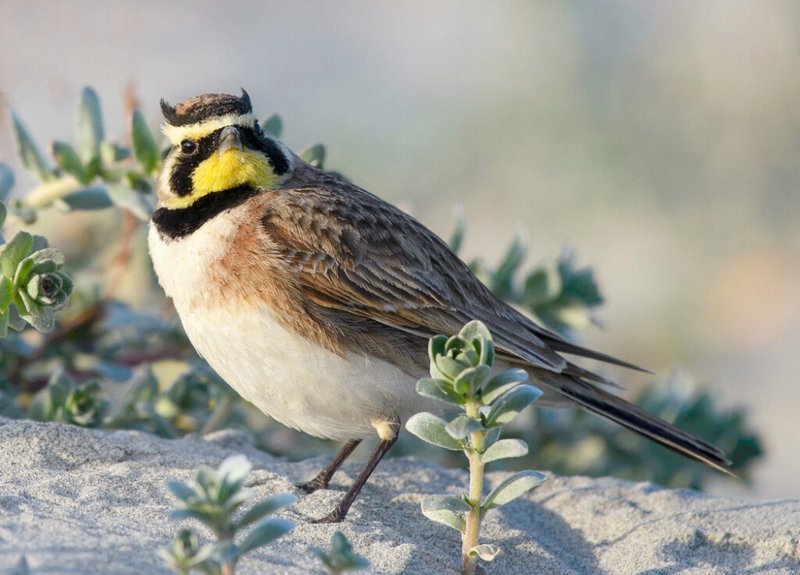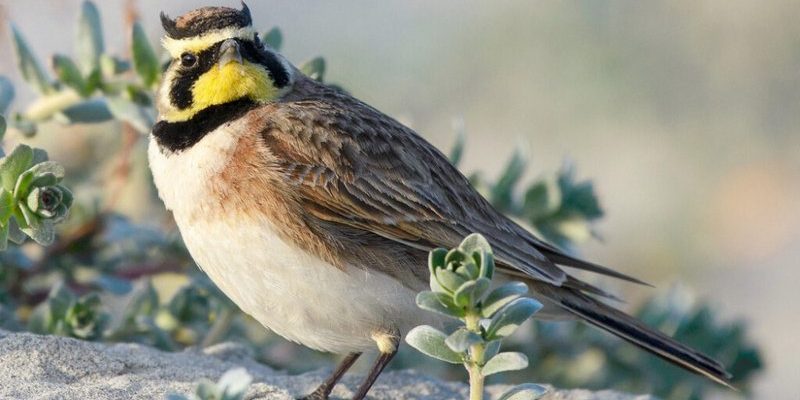
Imagine a bird that fills the air with sweet melodies, dances elegantly in the sky, and can even brighten your day with its delightful songs. That’s a lark for you! These small to medium-sized birds belong to the family Alaudidae, and they’re known for their beautiful singing abilities. While you might not come across them every day, larks are truly remarkable creatures that deserve our attention. They are found mainly in open habitats such as grasslands, farmlands, and even deserts, making them a common sight in various regions of the world.
Not only are larks recognized for their songs, but they also have some unique behavioral traits. They are ground-nesters, meaning they prefer to lay their eggs on the ground rather than in trees. This may seem risky, but their camouflaged nests make it easier for them to avoid predators. Throughout this article, we’ll explore various aspects of larks, from their habitats to their fascinating behaviors. So, let’s see what makes these birds so special!
Physical Characteristics of Larks
Larks come in a variety of shapes and sizes, but they generally share some common features. Most larks have a robust body with a rounded head, a short neck, and a long, pointed tail. Their plumage typically sports shades of brown, gray, and white, which helps them blend into their surroundings—a clever adaptation that protects them from predators. You might notice a cute little crest on the heads of some lark species, like the crested lark, which adds to their charm.
When it comes to size, larks can range from about 4 to 10 inches long, depending on the species. Some well-known larks include the Eurasian skylark, which measures around 7 inches, and the horned lark, recognized easily by the little horns on its head. Their wings are typically long and pointed, which allows them to soar gracefully through the air. In fact, you might catch a lark performing an impressive aerial display during mating season, showcasing its agility and beauty.
Habitat of Larks
Larks have a knack for selecting their habitats wisely. They thrive in open areas where they can forage for food and find nesting sites. You’ll often find them in grassy fields, savannas, and farmlands. Some species are even adapted to live in semi-desert regions! The key to their success lies in their ability to adapt to various environments while maintaining their need for space to fly and hunt.
In North America, you might spot the horned lark in coastal meadows or grasslands. Meanwhile, in Europe and Asia, the Eurasian skylark can be seen soaring over crops and pastures. These birds prefer habitats that allow them to forage for insects and seeds, their primary food sources. Given their preference for open spaces, larks are mostly absent from dense forests or urban settings, where there’s too much cover for their liking.
Diet and Feeding Habits
What do larks eat, you might wonder? These charming birds are primarily insectivorous, especially during the breeding season when they need to provide protein-rich food for their chicks. They feast on beetles, grasshoppers, and other insects to fuel their energetic lifestyle. However, larks are not strict insectivores; they also enjoy a diet of seeds, particularly during the winter months when insects are less available. This adaptability in their diet helps them survive in diverse environments.
Their feeding behavior is quite interesting, too. Larks often forage on the ground, scratching and pecking through the soil to unearth hidden treats. They have well-adapted beaks that allow them to pick seeds and insects with ease. Additionally, they are known to perform short flights to grab food items from the air or to display their vibrant songs. They are proficient foragers, making the best of their environment to find a balanced diet.
Behavior and Social Structure
Larks are social birds and often form small flocks, especially during migration or in non-breeding seasons. Their social interactions can be quite entertaining to observe. They are known for their playful behavior, engaging in aerial displays and singing competitions. When it comes to mating, the male lark takes center stage, showcasing his singing prowess to attract a female. These performances often include intricate flight patterns and melodious songs that echo beautifully across the fields.
During the breeding season, larks become more territorial. Males will defend their nesting areas fiercely, using their song as a way to communicate their presence to potential rivals. Interestingly, larks often return to the same nesting sites year after year, showcasing their strong bond to specific territories. This attachment helps ensure that they have a safe space to raise their young and access to reliable food sources.
Reproduction and Life Cycle
The mating season is an exciting time for larks, marked by elaborate courtship displays. After a male successfully attracts a female, they will engage in a short bonding period before nesting begins. The female typically takes the lead in nest-building, creating a well-camouflaged nest on the ground from grasses, plants, and feathers. This helps keep their eggs safe from predators, which is crucial in the wild.
Once the eggs are laid—usually 3 to 6 per clutch—both parents will share incubation duties. After about 10 to 14 days, the eggs hatch, and the parents take turns feeding the hungry chicks with insects and seeds. These little ones grow quickly, and by around two weeks of age, they are ready to fledge and take their first flights. It’s a fascinating sight to see them leave the nest, and parents continue to care for them even after they have flown. This nurturing behavior highlights their commitment to ensuring their young survive and thrive.
Conservation Status
The conservation status of larks varies by species, but many are currently facing threats due to habitat loss and agricultural practices. As farming expands and natural areas are converted into monoculture crops, larks lose their essential habitats. Pesticides and herbicides also pose significant risks to their food sources, adversely affecting their populations.
Conservation efforts are underway to protect these charming birds. Many organizations focus on habitat restoration and sustainable farming practices to create a more friendly environment for larks. By promoting the importance of biodiversity and fostering awareness about these birds, we can play a part in their conservation. Every small action counts, from supporting local initiatives to creating bird-friendly gardens in our own backyards.
Interesting Facts about Larks
| Size: | 4 to 10 inches long |
| Weight: | Varies by species, typically 0.7 to 1.5 ounces |
| Habitat: | Grasslands, farmlands, and open areas |
| Diet: | Insects and seeds |
| Life Span: | Up to 5 years in the wild |
| Notable Species: | Eurasian Skylark, Horned Lark, and Crested Lark |
FAQ
What does the term “lark” mean in a broader sense?
The term “lark” is often used metaphorically to describe someone who enjoys having fun or engaging in playful activities. It reflects the playful nature of the bird itself, which is known for its joyous singing and lively demeanor. Beyond being just a bird, “larking” can evoke a sense of lightheartedness and enjoyment in life, often associated with spontaneity and carefree moments.
Where can you find larks in the world?
Larks can be found across various regions, particularly in open spaces. While they are primarily found in Europe, Asia, and North America, some species have a broader distribution, reaching parts of Africa and Australia. If you’re hoping to spot a lark, look for areas with grassy fields, farmlands, and open areas where they can forage and sing.
Are larks migratory birds?
Yes, many lark species are migratory, meaning they travel to different areas depending on the season. For example, some larks migrate from their breeding grounds in Europe to warmer climates in Africa during winter. This seasonal behavior helps them find suitable habitats and food sources throughout the year, ensuring their survival.
How do larks communicate?
Larks are known for their beautiful songs, which they use to communicate with each other. Males are especially vocal, singing to attract mates and defend their territory. Their songs vary by species and can include melodious phrases, trills, and whistles. Beyond singing, larks may also use body language and flight patterns to convey messages to one another.
What is the life cycle of a lark like?
The life cycle of larks starts with courtship and nesting. After mating, the female builds a nest on the ground and lays several eggs, which both parents incubate. Once the chicks hatch, they are fed by their parents until they are ready to fledge, typically within two weeks. Larks often return to the same nesting sites each year, continuing the cycle of life.
Do larks have any natural predators?
Yes, larks face threats from various predators, including birds of prey like hawks and owls, as well as ground predators like foxes and snakes. Additionally, their eggs and nests can be vulnerable to mammals and reptiles. To counter this, larks often choose nesting sites that provide cover and concealment to protect their young from potential dangers.
How can I attract larks to my backyard?
If you’re interested in attracting larks to your backyard, consider creating a bird-friendly environment. Providing open spaces with short grass, scattered seeds, and areas for foraging will create an inviting habitat. Additionally, avoiding the use of pesticides can help promote the presence of insects, which are essential for their diet. With some patience, you might just be rewarded with the delightful songs of larks in your garden!
What role do larks play in the ecosystem?
Larks play a vital role in their ecosystem, primarily as insectivores that help control insect populations. By feeding on a variety of insects, they contribute to maintaining a healthy balance in these populations. Additionally, their nesting behavior and presence in open areas create opportunities for observation and appreciation of biodiversity, highlighting the importance of different species in our natural environment.

